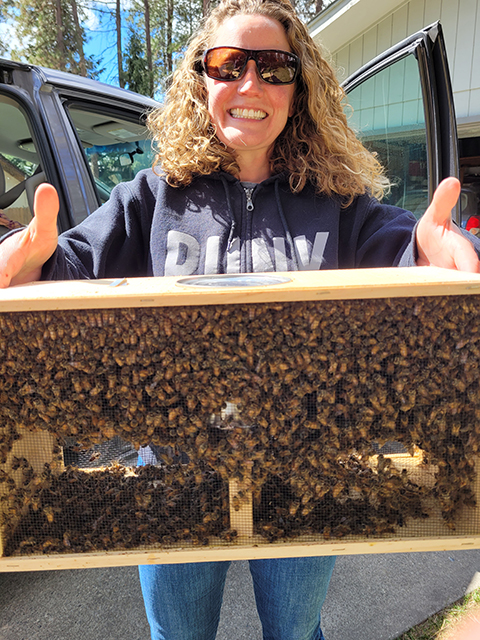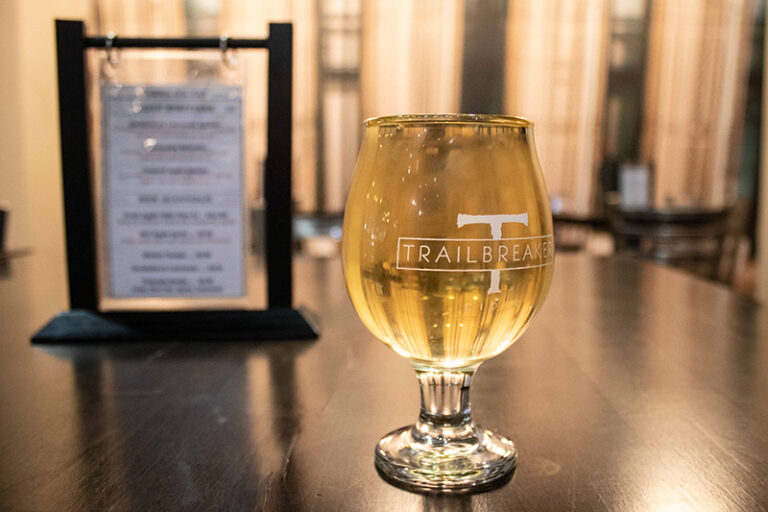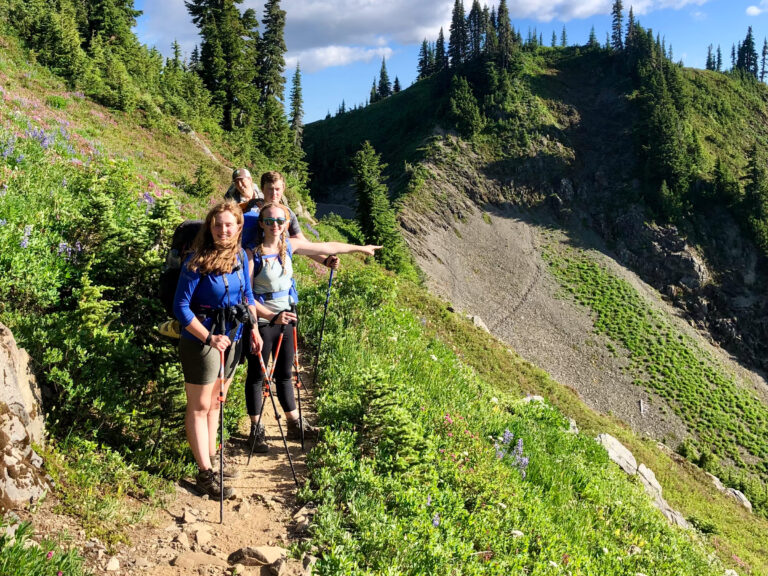Tips for making your own honey and protecting local bee populations
If you are interested in beekeeping, there are some things you should know before you begin. I am about to finish my first year of beekeeping, and, although it has been extremely rewarding, it has also been a challenge. There are many reasons to become a beekeeper; it’s a wonderful hobby, initiates you into an amazing community, allows you to help the bee population, and has the nice byproduct of honey, which is delicious and can be profitable. Personally, I wanted to be a beekeeper to help the decreasing honey bee populations and make a difference in our environment, if only on a small, local scale.
To start, I took the Apprentice Beekeeping course through WSU, taught by the Inland Empire Beekeepers Association (IEBA). The course included class instruction and Field Day classes, where students were given hands-on instruction. Reflecting on the last year, I have compiled some tips I feel would have benefitted me before I began my beekeeping journey.

Tip 1: Know at least a little bit of beekeeping verbiage. Although I did catch up quickly, I am sure I had the deer-in-the-headlights look in the first class, and I definitely wasn’t the only one. I am not saying you need to know a lot, but taking a quick look through Beekeeping for Dummies is a good idea. I strongly recommend you get that book specifically.
Tip 2: Paint your hives blue. Bees have color preference—they have photoreceptors for seeing ultraviolet wavelengths, and some research says it’s because flowers with green/blue to violet color tend to have the most nectar. Blue in particular gets bees excited.
Tip 3: Start with two hives. Having a second hive is a good idea in case your hive is having problems (e.g. the queen leaves, is weak, or stops laying). If one hive is failing, you can aid or combine your hives.
Tip 4: Get the eight-frame hive (rather than the 10-frame option). Once those frames are full, they are incredibly heavy. The beginning beekeeping cost is expensive, but, after that, beekeeping is pretty inexpensive.
Tip 5: Ask a lot of questions. If you take a course that has a mentor list, use it! If it wasn’t for one mentor in particular (whom I lovingly nicknamed Queen Bee), I would have given up on package day . . . which leads me to tip 6.
Tip 6: Ask about what could go wrong. On package day, when you install your bees into their hive, make sure you ask about all the things that could go wrong and how to remedy the situation before you are in the situation. Everything that could go wrong did go wrong for me, but Queen Bee talked me through all of it, and I am still going strong.
Tip 7: Think ahead. Planning ahead for next season to figure out what kind of things you will be doing for your bees and what other tools/inventory you might need is key. Unfortunately, I was always in the thick of it when I realized what I needed. One thing I really wish I had when winter hit was an insulated top cover and extra everything, from the actual hive to the frames. You always need extras.
Tip 8: ENJOY!!! About halfway through the course, one of the instructors told us, “If you haven’t set a chair near your hive and watched your bees yet, you’re really missing out!” Honeybees are truly amazing creatures, and I am thrilled to start a second-year course to learn even more.
Beekeeping has proven to be a wonderful hobby, learning experience, and a way to engage my mind and body with the outdoors in a new way. If you’re interested in beekeeping, it’s important to know what to expect, as the learning curve can be steep for a beginner. Joining a class, club, or stopping by the IEBA booth at the fair to ask questions is a great way to start. //
Alana Livingston gets to hike as part of her work as the owner of Wander Spokane, a downtown tour business. She wrote about Waikiki Springs Nature Preserve in the Sept/Oct 2022 issue.













